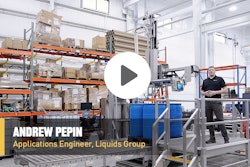
This content was written and submitted by the supplier. It has only been modified to comply with this publication’s space and style.
At Connect in Pharma (June 14-15 in Geneva, Switzerland), TekniPlex Healthcare will provide an in-depth look at the pharma packaging landscape amid the latest proposed sustainability and recyclability guidelines—including potential restrictions surrounding poly-fluoroalkyl substances (PFAS)—set to take effect across Europe. On June 14 at 10:30 a.m., Wouter Geurts, business development manager for TekniPlex Healthcare, will present PPWR and REACH: Where are We Now, and Where are We Going?, exploring the pharma sector’s unique challenges involving these two distinct regulations intended to promote recyclability, reduce packaging waste, and support a more circular economy, as well as reducing PFAS emissions into the environment and making products and processes safer.
Geurts will stress the need for transparency, collaboration, and innovation among materials science companies, drug manufacturers, and supply chain organizations to achieve tangible, holistic progress toward compliance with both regulations. 
In addition, at Connect in Pharma Stand C26, TekniPlex Healthcare will showcase an array of packaging and coating solutions, including the world’s first fully transparent recyclable mid-barrier blister package. Recyclable in geographies where the #5 (polypropylene) recycling stream is available, the mid-barrier blisters feature a polyolefin blister film paired with a barrier PP lidding film. This marks the first time a formed blister + lidding combination has been certified as recyclable—a significant milestone in the evolving push to make healthcare packaging more sustainable. TekniPlex Healthcare also will exhibit a fully recyclable polyester mono-material blister + lidding combination, suitable for products that do not require barrier protection.
Other solutions that will be on display include Flexapharm® SBC, TekniPlex Healthcare’s series of PVC barrier polyvinylidene chloride (PVDC) coated structures—which offer a superior barrier against oxygen and moisture—as well as an array of Aclar® laminates designed to preserve the efficacy and shelf life of drugs with demanding environmental protection requirements.

























